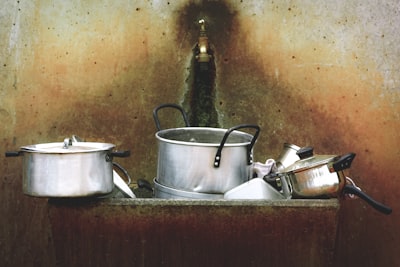
Devising - Level 1
In this level, you will learn about how to devise stories by using the elements of storytelling! The final challenge will be to improvise a stand-alone short story using all the elements of story.
On your journey to tackle the Final Challenge and complete the Level, you will need to earn 2 Power Ups and gain 2 Experience Points along the way.

In this level, you will:
- Power Up by learning about the elements of story
- Gain Experience by creating a setting and characters
- Gain Experience by crafting a conflict and resolution
- Power Up by understanding how to create stakes
- Take on the Final Challenge by creating a stand-alone short story
This Level Up Challenge is based on a unit designed and developed by student Thespians.
POWER UP: Identifying Elements of a Story


A story is composed of 5 main parts. In Writing, these would be the setting, characters, plot, conflict then the resolution. In devising and improvisational theatre (which is what you will be doing for this level's final challenge), the scene makes up the 'plot', and so 'plot' can be replaced with 'stakes'. Watch this video (source: Khan Academy) to learn more about the elements of story and how they are applied to an example story.
TO POWER UP: Watch this video recording of a "story event" at the Canadian Improv Games. While watching, notice how the actors are storytelling, and identify the 5 elements of story in the scene - Setting, characters, conflict, stakes, and resolution.
GAIN EXPERIENCE: Creating a Setting and Characters


Both settings and characters are fundamental to a story. Watch this video (source: Reedsy) about crafting effective settings and how your setting affects your characters and your story.
TO GAIN EXPERIENCE: Based on a random location prompt, describe a unique setting that engages the 5 senses, as well as two characters that could be found in that setting. To start off, you can have a friend give you a random non-geographic location as your prompt, or use www.can-i-get-a.com and hit the "location" button to get a random location prompt.
NOTE: If you need some additional help, check out Improv - Level 2 to learn more about endowing characters and settings when improvising.
GAIN EXPERIENCE: Crafting a Conflict and Resolution

The conflict is what makes the story interesting, and resolving the conflict in a meaningful way is what ties the story together. To dive deeper into how conflict and resolution are important to storytelling and devising, check out this article titled "How to Write Compelling Conflict: Create Conflict in Stories" (source: MasterClass)
In improvisational theatre, after a conflict is created, a resolution is brought in (usually from a pre-established object or idea) to end the improv scene. According to improwiki, when creating an improvised story, it is important to lay the foundation of setting and characters before jumping into your conflict and eventually your resolution.

TO GAIN EXPEREINCE: Given a setting, your job is to come up with a conflict related to the setting, and use ideas related to the setting to resolve it. To start off, you can have a friend give you a random non-geographic location as your prompt, or use www.can-i-get-a.com and hit the "location" button to get a random location prompt.
TIP: After you are given your random location prompt, think about two characters that might exist in this setting, and then think of what kind of conflict they might get into. Then, based on their setting, how might they resolve this conflict?
POWER UP: Understanding and Creating Stakes

Stakes are what steak is in a full course meal - the main dish. They are the driving force in an improvised story. Why does resolving this conflict matter? Why should the audience care? Consequences are necessary to keep a story interesting. Watch this video (source: Canadian Improv Games) to learn more about how creating stakes can help move a story forward.
To gain this devising power up, you will be asked to take a day-to-day problem (ex. Forgot to do the dishes, hair tie broke, late to school, tripped over a rock), and add stakes to make the problem to be more important. See below for an example.

Ex. Prompt: Forgot to do the dishes.
Because I forgot the do the dishes, the bacterium on the countertop is multiplying at an unbelievable rate. Because of this, they have grown massive and strong. They are getting so big that my kitchen is being torn apart by the sheer size and number of bacteria. If the bacteria get out of my house, then my whole town will become sick and can’t go to work. If they can’t work the economy will stall, and prices will go up. This will cause a financial crisis that will cause our government to fall into anarchy! Therefore, I must find a way to fend off the bacteria and remember to do the dishes.)
TO GAIN EXPERIENCE: Use a random number generator to give you a number between 1 to 20 (or have a friend give you a number between 1 and 20). Then, open this document and locate the random problem that matches the number you were given. Your challenge is to raise the stakes and make this problem more important than it may seem at first glance.
FINAL CHALLENGE: Stand-Alone Short Story!

During this journey, you powered up by identifying the elements of story and understanding how to raise the stakes. You also gained experience in creating settings and characters and crafting conflicts and resolutions. Now, using the power ups and experience points you gained along the way, you are ready take on the final challenge: devising your own short story.
TO COMPLETE THE FINAL CHALLENGE: Now that you know what the elements of a story are and have had some practice applying them, it’s time to create your own story! Starting with a random non-geographic location prompt, the final challenge is to create a short (2-3 minute) story using all 5 story elements! (setting, characters, conflict, stakes, and resolution). To start off, you can have a friend give you a random non-geographic location as your prompt, or use www.can-i-get-a.com and hit the "location" button to get a random location.

HINT: Your time distribution should look like a cake - start from the bottom and work your way to the top. (see below)
[ Resolution ]
[ Stakes ]
[ Conflict ]
[ Characters ]
[ Setting ]
| Access Date | Quiz Result | Score | Actions |
|---|
Learning Center
- Webinars
- Adjudication Trainings
- Featured Courses
- Full Course List
- Lesson Plan Library
- Click to Teach Interactive Online Lessons
- Resources for New Theatre Teachers
- Technical Theatre Educator's Manual
- Connected Arts Networks
- Diverse Resources for Theatre Education
- Behind the Scenes Technical Theatre Curriculum
- Social & Emotional Learning
- Additional Standards Based Instructional Resources
- Search the Catalog
- Cart (0 items)
Full Site Search
Membership Benefits
Join EdTA for full access to our professional development and standards-based teaching resources, including:
- 300+ lesson plans
- Click to Teach online lessons
- K-12 curriculum
- Webinars
- And more!




